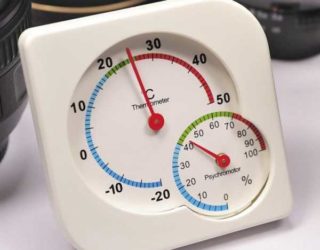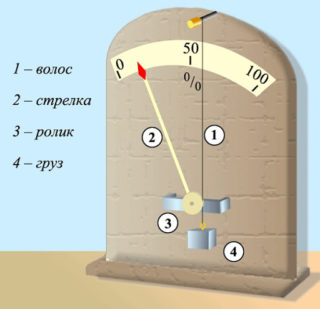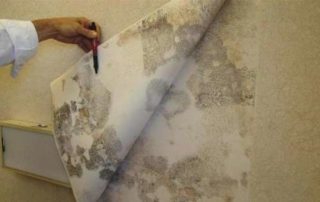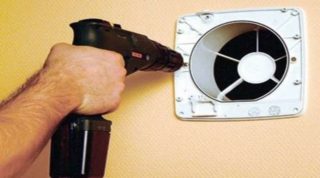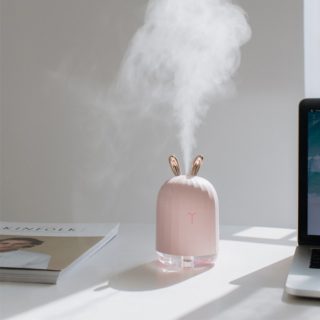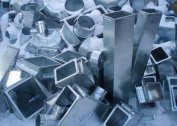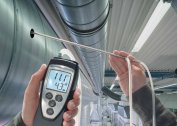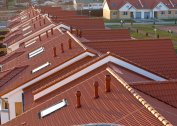The humidity level characterizes the microclimate in housing in terms of comfort for a person along with air quality and temperature. For each room in the house there are recommended indicators depending on the purpose, which do not affect the well-being of the person and ensure the safety of the situation. To measure the number of molecules of water vapor helps the determinant of humidity in the apartment.
Air norms
The atmosphere contains oxygen, nitrogen, carbon dioxide and other types of gases, the concentration of which does not exceed 1% of the total mass. Water vapor is also present in the air and is unsaturated - the number of molecules evaporating from the surface of the water does not equal the number of elements that return there over a period of time.
The absolute moisture indicator expresses the mass in grams of steam, which is actually present in 1 m3 of air. The index value is affected by temperature and moisture intake with new flows. At the same temperature, air can absorb a certain amount of vapor and be completely saturated with moisture.
Relative humidity is the percentage of the absolute value to the level of vapor saturation at certain temperature indicators. The pressure of the concentrated vapor increases with heating of the air, when saturated, condensation appears in the form of dew, fog. Measure the humidity in the apartment using special tools and instruments.
Average standards for an apartment:
- kitchen, dining room, bathroom - 40-60%;
- study or library - 30–40;
- bedroom - 40-50%,
- children - 45–55%.
The generally accepted indicator of humidity is adopted at the level of 45%, but varies depending on operational characteristics. Deviations occur in winter cold and summer heat. Lack of moisture or its excess leads to poor health and well-being. The bathroom and kitchen are characterized by a high level of humidity due to their functionality, therefore, the standards for them are provided above.
In autumn, the air temperature decreases, and heat sources are not yet involved in the work, so ventilation should be increased to eliminate the exhaust air masses.
Devices for measuring humidity in the apartment
Thermohygrometer is a technical device for determining the degree of saturation of air with water vapor and temperature. The principle of operation of the device is based on the physical laws and chemical properties of materials.
There are several types of devices that change the properties when humidity changes:
- ceramic - uses the property of clay, kaolin or oxides of certain metals to change the electrical resistance;
- hair - works on the basis of the ability of a human hair to lengthen and contract;
- condensation - finds the dew point by the degree of heating of the metal element using an optical device;
- weight - operates on the basis of detecting the amount of absorbed moisture from a certain mass of the studied stream.
Most often used electronic and psychrometric instruments.
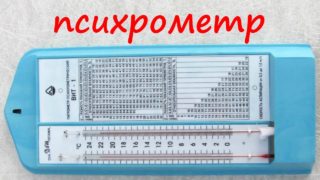 The psychrometer works on the basis of the readings of two thermometers, which are called dry and moist. The first determines the degree of heating of the air, and the second is wrapped with a fabric wick, the end of which is placed in a container of water. A humidified sensor measures the temperature of the raw tow during evaporation of water droplets.When reading information, the difference in readings is determined and checked against the data of the table, which is sold with the device.
The psychrometer works on the basis of the readings of two thermometers, which are called dry and moist. The first determines the degree of heating of the air, and the second is wrapped with a fabric wick, the end of which is placed in a container of water. A humidified sensor measures the temperature of the raw tow during evaporation of water droplets.When reading information, the difference in readings is determined and checked against the data of the table, which is sold with the device.
Hygrometers of electronic type for measuring air humidity in an apartment are:
- capacitive;
- conductometric (resistive);
- piezoelectric.
Capacitive devices determine the difference in the ability to collect electric charge by a capacitor when the humidity of the medium changes. Resistive work on the principle of increasing or decreasing the electrical conductivity of polymers in different conditions. Piezoelectric ones operate on the basis of the property of a quartz plate to change the pulsation frequency with increasing weight when saturated with vapor.
Danger of excessive humidity and dry air
 With a decrease in water vapor saturation in the atmosphere, static electricity arises raising dust particles. Dry air is an optimal environment for the reproduction of microbes and dust mites, so you need to determine the humidity in the apartment and increase it.
With a decrease in water vapor saturation in the atmosphere, static electricity arises raising dust particles. Dry air is an optimal environment for the reproduction of microbes and dust mites, so you need to determine the humidity in the apartment and increase it.
Problems encountered in a dry atmosphere:
- the appearance of dermatitis, peeling and irritation, a decrease in skin elasticity;
- redness of the eyes, dryness and burning, drying out of the mucous membrane;
- headaches and weakness, decreased performance, increased stress on the heart and circulatory system;
- slow digestive system;
- increased catarrhal diseases, dry airways;
- increased allergic reactions to various pathogens.
Plants in a dry microclimate evaporate more water, so their balance is disturbed, leaves are curled, dry and fall off. Colonies of spider mites, whiteflies, thrips develop on the body of indoor flowers.
An excess of water in the atmosphere is also painfully perceived by the human body, because mold, bacteria and fungi multiply.
Problems with a raw microclimate:
- respiratory diseases, for example, runny nose, bronchitis, asthma and allergies are becoming more frequent, sometimes temporary manifestations become chronic;
- dampness and stuffiness are felt, it becomes difficult to breathe;
- drying time increases.
Walls and pieces of furniture are covered with a thin layer of mold; the air smells of dampness. Indoor plants rot and disappear. Canvases and frames of wooden doors swell and do not close well. In closed rooms, moisture is in the atmosphere and gradually settles on surfaces, creating an environment for bacteria.
Change in air humidity at home
In winter, outdoor air drops into the room and heats up under the influence of heat sources, for example, heaters or central heating batteries. In its original state, it can hold a small amount of moisture, as chilled. With increasing temperature, the ability to moisturize increases, but the vapor content remains the same, because moisture has nowhere to come from.
The difference between these positions (it can hold and actually contains) increases, so the relative humidity indicator drops. Moisture evaporates from the surface of the skin, the water balance in the body is disturbed, and a feeling of dry mucous membranes appears.
The dampness in the apartment also appears by chance and has reasons:
- There is no ventilation in the house, there is no natural influx of street air or it does not penetrate enough into the room due to hermetic modern windows or doors.
- Sometimes natural ventilation is not enough, but the forced inflow and removal is not organized or the channels leading to the waste mass are clogged.
- There is water in the basement of the house due to the poor performance of the service company, in which case the foundation, walls, flooring are saturated with moisture.
- Seams between the wall panels are poorly sealed, which leads to the formation of condensation inside the room and the gradual evaporation of droplets.
- From time to time, neighbors are flooded from above, because of which the floors, walls are wet and successively give moisture into the apartment.
Residents often dry laundry inside the room, from the surface of which steam rises and moisturizes the atmosphere. There is no dome hood above the stove, and boiling steam enters the environment. Sometimes water pipes become unusable in the thickness of the wall and become the cause of wetting of building envelopes.
How to increase humidity
To increase humidity to normal levels, indoor plants help, from the leaves of which water evaporates intensively. But in a dry environment, they themselves do not have enough moisture, so spraying is an effective way. The procedure is best done in the morning.
To increase the water vapor content in the air you need:
- ventilate the room 2-3 times a day, regardless of the weather and temperature outside the window, you need to open the openings for 20-40 minutes;
- carry out daily wet cleaning of floors and open surfaces;
- hang wet towels in the room, place the containers with water and change them when dry.
The industry produces professional air humidifiers in the form of steam, ultrasonic and mechanical devices.
In steam appliances, the liquid is heated by an electric element, and in the form of steam passes into the atmosphere of the room. Installations quickly increase humidity in the air.
Ultrasonic devices deliver cold steam, which is produced by the action of waves directed at a moistened membrane. Work silently and partially disinfect streams.
Mechanical installations are called sinks. They do not let off steam, but pass air from the room through a water plug. The flow is sucked into the tank, where the blades are spinning, while turning, touching the surface of the water. The air is humidified inside and discharged into the atmosphere already with the required characteristics.
How to lower humidity
You can prevent excessive saturation of the airspace with water vapor even at the construction stage or in the process of finishing work. To do this, waterproofing floors, exterior walls and ceilings. Roll materials or special impregnation with moisture protective compounds are used. Such prevention will prevent the penetration of excess fluid, but will not solve the problem of moisture from internal sources.
Wet rooms should be regularly ventilated to give an influx of masses with reduced moisture content. Drying wet items is not recommended. It requires checking the operation of the ventilation system and identifying leaks in the water supply and sewage systems. There are household air dryers on sale.
Condensation units operate at a temperature not lower than + 10 ° С taking into account the dew point. The device draws in air that enters the plates, cooled with a special substance up to + 7 ° С. Condensation is collected, droplets flow into a collecting tank. The dried air is heated before entering the home.
The adsorption type functions in unheated buildings, basements, garages, verandas, attics. The unit has two chambers, hermetically isolated from the environment. A rotor is installed between them. The fan of the first compartment drives the air flow to the drum, where moisture is absorbed using silica gel. The dried mass goes into the second chamber with a heater and enters the room.
